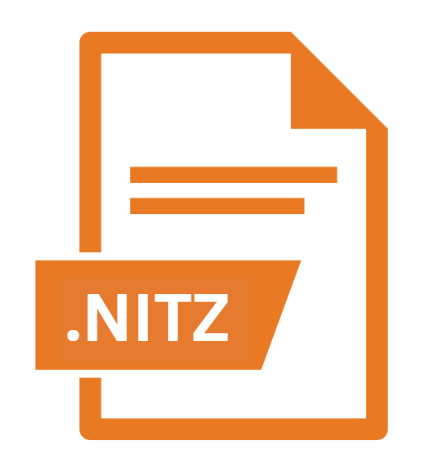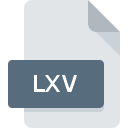.NITZ File Extension

NITZ Ransomware Encrypted File
| Developer | N/A |
| Popularity | |
| Category | Encoded Files |
| Format | .NITZ |
| Cross Platform | Update Soon |
What is an NITZ file?
The ‘.NITZ’ file extension serves as the hallmark of files encrypted by the NITZ ransomware.
Once infiltrated by this malicious software, files on the victim’s system undergo encryption, appending the ‘.NITZ’ extension to their original filenames.
This transformation renders the files inaccessible and effectively holds them hostage, demanding a ransom for their decryption.
More Information.
The history of NITZ ransomware is intertwined with the evolution of ransomware as a whole. Emerging in the wake of early ransomware strains, NITZ represents a more sophisticated and potent threat. Its initial purpose, like that of its predecessors, is financial extortion.
By encrypting valuable files and demanding payment in cryptocurrency, the operators of NITZ seek to profit at the expense of victims’ data and livelihoods.
Origin Of This File.
The origin of the NITZ ransomware can be traced back to the murky depths of the cybercriminal underworld.
Like many ransomware strains, NITZ likely originated from clandestine forums or underground marketplaces where cybercriminals converge to exchange nefarious tools and tactics.
Its creators, shrouded in anonymity, deploy it with the intent to extort financial gain from unsuspecting victims.
File Structure Technical Specification.
The file structure of NITZ-encrypted files bears the ‘.NITZ’ extension appended to their original filenames.
Beneath this superficial alteration lies a complex encryption scheme designed to render the files unreadable without the decryption key held by the attackers.
The technical specifications of this encryption mechanism may vary, employing robust cryptographic algorithms to ensure the files remain impervious to decryption attempts without the key.
How to Convert the File?
Converting NITZ-encrypted files back to their original state is a complex and challenging process, often requiring specialized knowledge and tools. Here are some potential approaches to file conversion:
- Obtain the Decryption Key: The most straightforward method of converting NITZ-encrypted files is to obtain the decryption key from the attackers. This typically involves paying the ransom, although there is no guarantee that the attackers will provide a working decryption key or honor their promises. Victims should carefully consider the risks and consequences before pursuing this option.
- Use Decryption Tools: In some cases, cybersecurity researchers and law enforcement agencies may develop decryption tools capable of unlocking files encrypted by specific ransomware strains, including NITZ. Victims can search for publicly available decryption tools or consult with cybersecurity experts for assistance.
- Data Recovery Techniques: If a decryption key is unavailable or ineffective, victims may explore data recovery techniques to recover their files. This may involve using specialized data recovery software or services to attempt to restore encrypted files from backups, shadow copies, or other sources.
Advantages And Disadvantages.
Advantages:
- Financial Gain for Cybercriminals: The primary advantage of NITZ ransomware is its potential to generate significant financial gain for cybercriminals. By encrypting files and demanding payment for their decryption, attackers can extort money from victims, often in the form of cryptocurrency, which is difficult to trace.
- Anonymity: NITZ ransomware offers a degree of anonymity to its operators. The use of cryptocurrency for ransom payments and the obfuscation techniques employed in the distribution of the malware can make it challenging for law enforcement agencies to identify and apprehend the perpetrators.
- Ease of Deployment: Like many ransomware variants, NITZ can be deployed relatively easily and at scale. Cybercriminals can distribute the malware through various vectors, including phishing emails, malicious websites, and exploit kits, reaching a wide range of potential victims with minimal effort.
Disadvantages:
- Data Loss and Damage: The foremost disadvantage of NITZ ransomware is the potential loss or damage of valuable data. Once encrypted, files become inaccessible without the decryption key, which may not always be attainable. This can have severe consequences for individuals, businesses, and organizations, leading to data loss, operational disruptions, and financial repercussions.
- Reputational Damage: Falling victim to a ransomware attack can inflict significant reputational damage, particularly for businesses and organizations entrusted with sensitive information. The public disclosure of a ransomware incident can erode trust among customers, partners, and stakeholders, tarnishing the affected entity’s reputation and credibility.
- Legal and Regulatory Ramifications: Ransomware attacks, including those perpetrated using NITZ ransomware, can have legal and regulatory ramifications for both victims and perpetrators. Depending on the jurisdiction and the nature of the attack, victims may be required to report the incident to regulatory authorities and comply with data breach notification requirements, potentially facing fines, penalties, and legal liabilities.
How to Open NITZ?
Open In Windows
- Decryption Tools: If you have access to a decryption tool specifically designed for NITZ ransomware, use it to decrypt the files. Ensure that the decryption tool is from a reputable source to avoid further harm to your system.
- Data Recovery Software: If decryption is not an option, attempt to recover your files using data recovery software. Tools like Recuva, EaseUS Data Recovery Wizard, or Stellar Data Recovery can help you retrieve files from backups or shadow copies.
Open In Linux
- Decryption Tools: Look for decryption tools that are compatible with Linux distributions. These tools may be available through cybersecurity forums, research organizations, or law enforcement agencies.
- Data Recovery Utilities: Linux offers various data recovery utilities such as TestDisk, PhotoRec, and Scalpel. These tools can help recover files from backups or other sources if decryption is not possible.
Open In MAC
- Decryption Tools: Check for decryption tools specifically designed for macOS. These tools may assist in decrypting files encrypted by NITZ ransomware.
- Data Recovery Software: Utilize macOS-compatible data recovery software like Disk Drill, Data Rescue, or R-Studio to recover files from backups or other storage devices.
Open In Android
- Decryption Tools: While decryption tools for Android may be rare, it’s crucial to avoid installing unknown apps claiming to decrypt files, as they may contain malware.
- Data Recovery Apps: Explore data recovery apps available on the Google Play Store, such as DiskDigger, MobiSaver, or Dumpster, to recover deleted or encrypted files from your Android device.
Open In IOS
- Decryption Tools: Due to the stringent security measures on iOS, decryption tools for NITZ-encrypted files are unlikely to be available on the App Store. Exercise caution and avoid installing unknown apps that claim to decrypt files.
- Cloud Backups: If your encrypted files were synced to iCloud or another cloud service before the ransomware attack, you may be able to recover them from your cloud backups.













